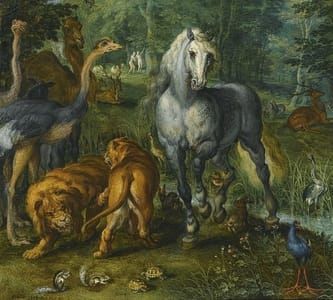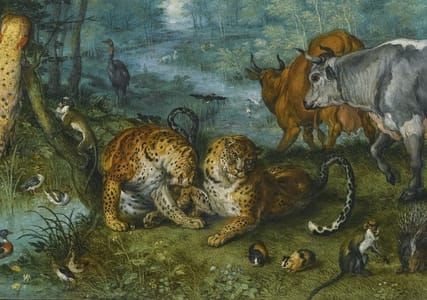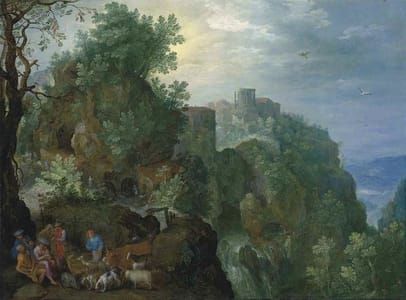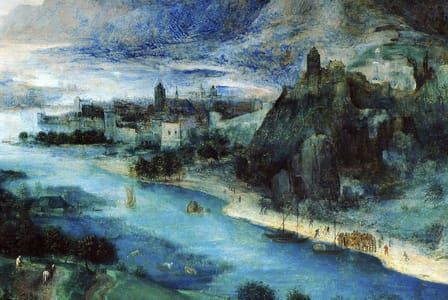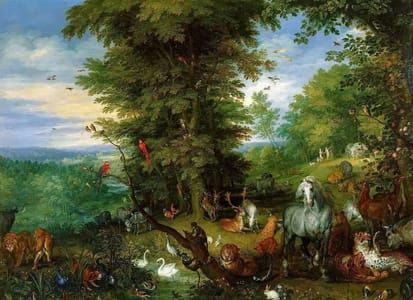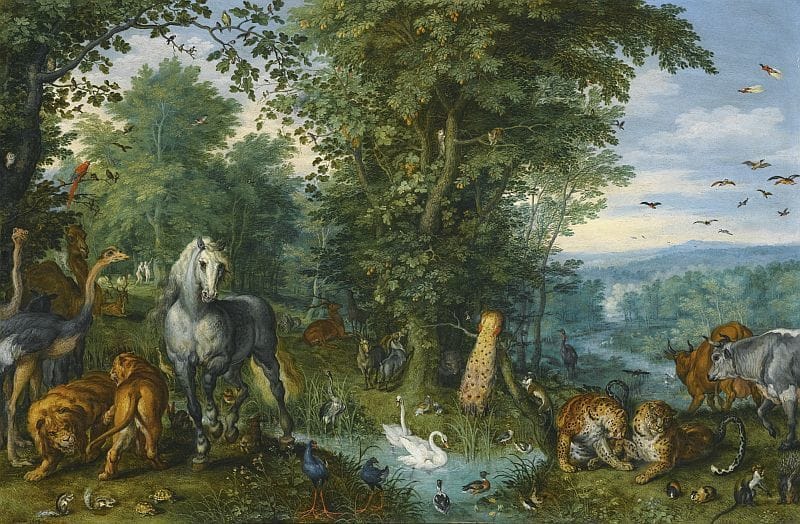

The Garden of Eden, 1613
Jan Brueghel the Elder
In this small painting, Brueghel represents ostriches, dromedary, lions, goats, birds and many other living creatures all gathered to symbolize the perfect harmony that existed in the world before the Fall of Man. In the background Eve is grabbing the forbidden fruit, and is about to give it to Adam. By inverting the composition and placing the real subject of the painting in the background, Brueghel was able to better display all his talent for representing the animals of Creation and so the magnificence of God.
This iconography demonstrates the impact of the philosophy of Cardinal Federico Borromeo (1564-1631), who became an important patron for Brueghel when he arrived in Italy in about 1589-1590 and remained a friend after the artist returned to Antwerp in 1596. For Borromeo the variety of animals in the world embodied the divine power of Creation. Brueghel was very influenced by this idea, as he painted several other versions of the Garden of Eden, from 'The Creation of Adam' (1594, Rome, Galleria Doria Pamphilij) to 'The Fall of Man' made in collaboration with Rubens (1615, The Hague, Mauritshuis).
Brueghel’s close personal and professional relationship with Rubens may also have contributed to the quality of this painting. For example, the two lions on the left are very close to Rubens’ drawn studies of similar animals now in London (British Museum) and Vienna (Albertina), suggesting that Brueghel may have had access to the drawings. But the exquisite detail in this painting shows that Brueghel also made his own studies after nature. In 1604 he visited the menageries of Holy Roman Emperor Rudolf II in Prague, and in Brussels, as court painter from 1606 to 1621, he had access to the ones of Archduke Albert of Austria.
(https://www.nationalgallery.org.uk/paintings/jan-brueghel-the-elder-the-garden-of-eden)
Uploaded on Oct 4, 2017 by Suzan Hamer
Jan Brueghel the Elder
artistArthur
Wait what?

